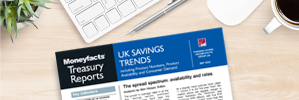Rachel Springall, Finance Expert at Moneyfacts, said:
“Savers may be concerned about the expectations for interest rates to come down this year, so a longer-term fixed bond could become more desirable. However, their popularity hinges on whether savers hunting for a guaranteed return feel content to lock their cash away for longer. It is worth noting that one-year bonds have been paying higher rates on average than longer-term bonds since July 2023, so it’s understandable for savers to be attracted to a shorter-term deal. It’s impossible to make predictions on interest rate moves, but providers have been watching the markets very closely, and in December repricing activity was prevalent. The average shelf-life of a fixed rate bond plummeted to 33 days, down from 57 days a month prior, the biggest fall in more than four years (July 2020) and the lowest number of days since March 2024.
“The rate gap between the average one-year and longer-term fixed bond has shrunk significantly over the past year, down from 0.41% to 0.27% since the start of January 2024, and is at its lowest margin since September 2023 (0.22%). This demonstrates the changing attitude on rate pricing. Average rates across fixed bonds and fixed ISAs have now been below 5% for an entire year. This is unwelcome news for savers with maturing bonds, but it is still essential to avoid any indecisiveness to secure a new deal as rates fall. The average one-year fixed bond rate has dipped by 0.47% over the past six months alone. In positive news, providers will likely make efforts to entice savers with newly priced fixed rate ISAs in the weeks ahead, but the peak of such a rate war would typically be seen in March, and early April at the start of the tax-year. Therefore, some savers may feel inclined to adopt a wait and see approach until nearer the new tax-year.
“Those savers who prefer to keep their cash stored in an easy access account may be disappointed to see rates have continued to drop. Cash ISAs have unfortunately not been immune to these cuts, as the average rate on an easy access Cash ISA took a notable hit month-on-month, seeing the biggest drop since June 2020. However, Cash ISAs overall have a key part to play this year for savers looking to protect their investment from tax. This is even more pressing for those who may breach their Personal Savings Allowance (PSA) and start paying tax on the interest they earn beyond the set thresholds. Whichever type of account consumers choose this year, providers need to work hard to tailor their range to suit unique needs and serve their savers well.”
Rachel Springall, Finance Expert at Moneyfacts, said:
“Savers may be concerned about the expectations for interest rates to come down this year, so a longer-term fixed bond could become more desirable. However, their popularity hinges on whether savers hunting for a guaranteed return feel content to lock their cash away for longer. It is worth noting that one-year bonds have been paying higher rates on average than longer-term bonds since July 2023, so it’s understandable for savers to be attracted to a shorter-term deal. It’s impossible to make predictions on interest rate moves, but providers have been watching the markets very closely, and in December repricing activity was prevalent. The average shelf-life of a fixed rate bond plummeted to 33 days, down from 57 days a month prior, the biggest fall in more than four years (July 2020) and the lowest number of days since March 2024.
“The rate gap between the average one-year and longer-term fixed bond has shrunk significantly over the past year, down from 0.41% to 0.27% since the start of January 2024, and is at its lowest margin since September 2023 (0.22%). This demonstrates the changing attitude on rate pricing. Average rates across fixed bonds and fixed ISAs have now been below 5% for an entire year. This is unwelcome news for savers with maturing bonds, but it is still essential to avoid any indecisiveness to secure a new deal as rates fall. The average one-year fixed bond rate has dipped by 0.47% over the past six months alone. In positive news, providers will likely make efforts to entice savers with newly priced fixed rate ISAs in the weeks ahead, but the peak of such a rate war would typically be seen in March, and early April at the start of the tax-year. Therefore, some savers may feel inclined to adopt a wait and see approach until nearer the new tax-year.
“Those savers who prefer to keep their cash stored in an easy access account may be disappointed to see rates have continued to drop. Cash ISAs have unfortunately not been immune to these cuts, as the average rate on an easy access Cash ISA took a notable hit month-on-month, seeing the biggest drop since June 2020. However, Cash ISAs overall have a key part to play this year for savers looking to protect their investment from tax. This is even more pressing for those who may breach their Personal Savings Allowance (PSA) and start paying tax on the interest they earn beyond the set thresholds. Whichever type of account consumers choose this year, providers need to work hard to tailor their range to suit unique needs and serve their savers well.”








